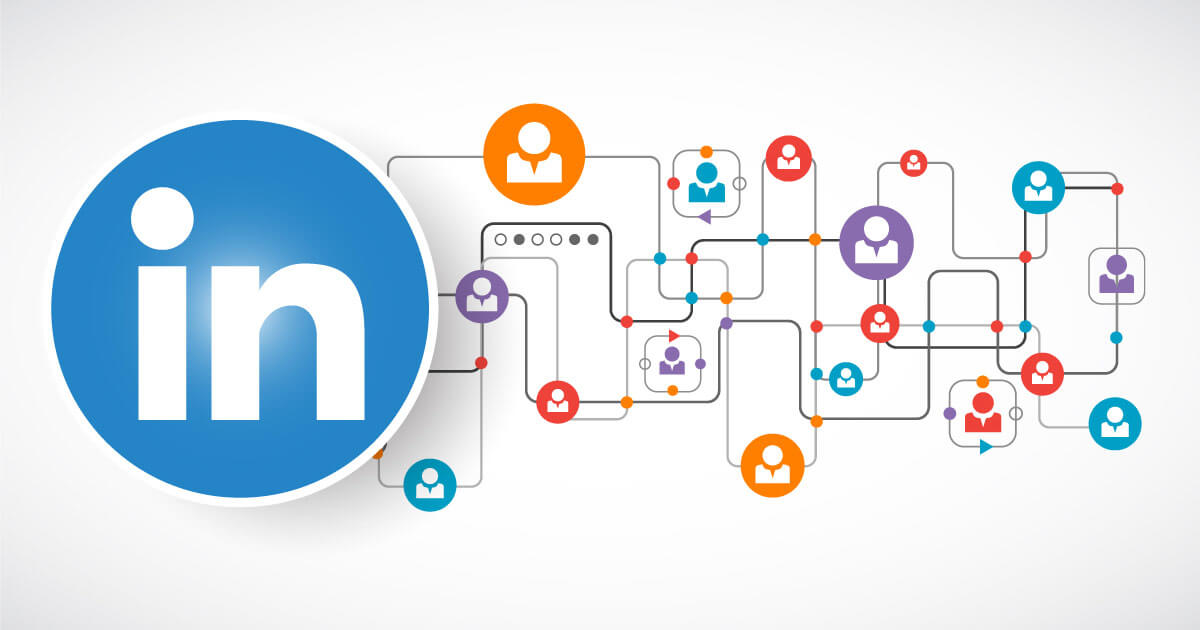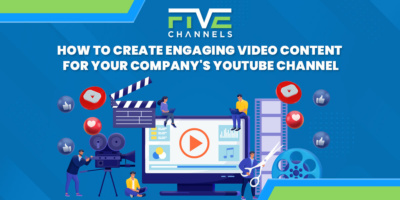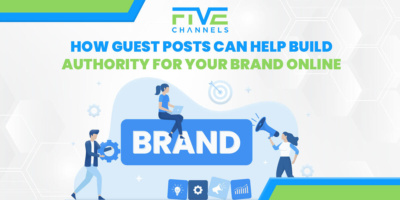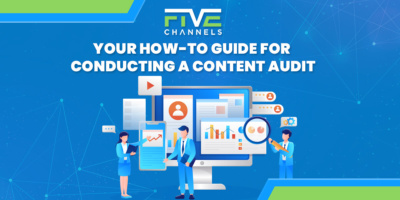Did you know that there are now more than half a billion users on LinkedIn?
That’s right – and there’s a way to tap into this highly-engaged group of users to the benefit of your business.
Wondering how?
By creating industry-specific LinkedIn groups. Used correctly, LinkedIn groups can be a source of new leads, a way to form meaningful connections with others in your industry, and a chance to demonstrate your expertise.
Maybe you don’t know the first thing about setting up LinkedIn groups?
Perhaps you’re worried that your group could fail to attract members, reflect badly on your brand, or be plagued with spam?
That’s okay, because we’re here to take you through the entire process of creating a healthy LinkedIn group, step-by-step.
Are you ready to create a killer group that benefits your business?
Let’s do this.

Choose a Specific Industry and Niche
Making an overly generalized LinkedIn group covering a broad topic like ‘marketing’ won’t get you very far.
Instead, try to hone in on a specific niche and imagine the kind of person who might join your group.
For example, you might create a group called, ‘Social Media Marketing for Restaurants’ – it has a clear purpose, and you know that the people who join will be involved in marketing to restaurants and interested in using social media.
If you want to use your group to promote your business, it should also be relevant to the services you provide.
The example above could be perfect for a business that provided social media management for small businesses.
Use Relevant Keywords in Your Group Description
If you want your group to be found, you need to use the right keywords in your name and description.
Think about the search terms your ideal members are likely to use when looking for new groups to join, and try to include these where possible.
At a minimum, your group description should include your industry, your main topic, and a clear explanation of what your group is actually about.
Way too many LinkedIn groups have vague, confusing descriptions, and this can put people off joining. Imagine that someone who knows nothing about your group is checking it out for the first time – would they understand the purpose?
Take your time with your description – it’s your best shot at attracting your ideal members via LinkedIn search.
Set Your Group to Member Pre-Approval to Avoid Spam
Imagine you are throwing a party.
 Would you let every random person off the street wander in and start mingling?
Would you let every random person off the street wander in and start mingling?
Hopefully not – and your LinkedIn group should be the same.
Sadly, LinkedIn is full of scammers and spammers, and poorly managed groups are hit the hardest.
By switching on member pre-approval, you’ll have to screen members before they’re allowed to join. This prevents spam, stops people who aren’t part of your industry from joining, and keeps the group high-quality.
To speed up the pre-approval process, it helps to set requirements for group members. For example, “Must have worked in the industry for 3+ years and made 100+ connections’.
There’s no point in starting a group if it ends up full of spam and worthless content. Use member pre-approval to make your group VIP-only.
Keep the Group Open and Searchable
While you want to be picky about who’s allowed to join and post in your group, you need to make sure that the actual content of the group is visible to everyone.
If your group is closed, only members will see the discussions and posts.
When your group is open, everyone can read your awesome content, but only the best LinkedIn members can join and contribute.
The smartest strategy is to create an open group where discussions are visible, content can be indexed by search engines, and posts can be shared to other social networks – while leaving member pre-approval switched on.
This will boost traffic to your group, attract new members, and help your business to gain industry recognition.
If your group isn’t open and searchable, nobody will ever find it – and how will your business benefit from a secret group that no-one ever sees?
Promoting your group will be a huge factor in its success, so you need to make sure there’s something there to promote.
Monitor Your Group Closely
Nothing prompts a professional to leave a LinkedIn group faster than annoying spam posts.
Since you’ve switched on member pre-approval, you shouldn’t have to deal with too many of these, but a few may still slip through the net.
People may pose as members of your target group simply to join your group and post their own promotional content – not cool.
When this happens, it’s good practice to remove the post and send a message to the member, letting them know that you don’t allow this type of post.
If it’s an honest mistake, they should be able to remain a part of the group without an issue. If the problem reoccurs and they’re just looking to promote themselves, it’s time to kick them out.
The same goes for off-topic posts – your group exists for a reason, and members should keep it relevant. There are a million other places for them to share their political views, holiday photos, etc.
Monitor your group closely to keep the quality high and avoid spam promotional messages.
Contribute Regularly and Encourage Discussion
What’s worse than a LinkedIn group that’s full of spam?
 A LinkedIn group with no activity whatsoever.
A LinkedIn group with no activity whatsoever.
When you start a new group, it may be difficult going at first. Perhaps you’re short on members, people aren’t sure what to post, or it’s hard to get a good debate going.
You can help your new group to grow and thrive by dedicating a little time to contributing meaningful content each day.
For example, you could post a discussion question on Mondays, an interesting industry quote on Wednesdays, and some research findings on Fridays.
Mix it up with a combination of text posts, images, infographics and marketing videos.
Again, imagine you’re at a party – bring up interesting topics, introduce members to each other, and keep the atmosphere positive.
Contributing regularly is an excellent way to foster discussions, inspire others to contribute, and keep the group fresh and exciting.
Invite Your Target Members
Why wait around for your ideal members to join your LinkedIn group, when you could invite them yourself?
LinkedIn makes it easy for you to invite members using a dedicated link that works on any platform.
If you’re already connected to relevant professionals, send them a personalized message letting them know why they should join.
If you already run successful groups on other platforms, like Facebook or Google+, send out a link to your members – there’s a good chance many of them use LinkedIn.
You could also look for existing LinkedIn groups that have some crossover with yours, and make a quick post explaining your new group and inviting people to join.
Just be sure to post your invite link in specific, relevant locations, or you’ll be forced to sift through hundreds of applications before you find the right members.
Promote Your Group On LinkedIn
Once your group is up-and-running, you’ll have plenty of opportunities to promote it around the site.
LinkedIn allows you to send up to 50 announcement messages to your contacts per day, and this is a great way to let relevant connections know about your group.
On top of that, re-posting group content to your own LinkedIn profile is an excellent way to have it appearing on peoples’ feeds – this works especially well if you have lots of connections.
Is there a lively discussion going on in your group? Re-posting it to related groups you’re a member of and asking people for their thoughts is an excellent promotional strategy.
You’re sharing valuable content to a group you’re a member of, and subtly letting everyone know that your group exists – it’s a win-win.
Pay to Advertise Your Group on LinkedIn
If you’re not seeing the kind of membership numbers you were hoping for, it could be worth investing in some paid advertising.
LinkedIn ads are quick and easy to design, and you can set your own budget.
In most cases, it’s possible to get plenty of organic promotion via other channels. However, for certain niche groups, that might not be as easy.
If you feel like you’ve tried everything and still aren’t attracting members, it’s worth running an experimental test ad.
Before you spend too much on a campaign, be clear on the kind of value you’re expecting to get from your group. Are you hoping that it will drive sales or increase leads?
If so, will you be able to recoup your advertising costs?
Don’t spend a fortune on promoting a group if you aren’t clear on how it will benefit your business in the long run.
Promote Your Group on Other Social Media Platforms
Do you have a successful presence on every social network but LinkedIn?
Don’t worry – you can make that work for you.
 It’s been shown that both Facebook and Twitter are used for recruitment and business opportunities, so they’re likely full of the kinds of professional you want in your group.
It’s been shown that both Facebook and Twitter are used for recruitment and business opportunities, so they’re likely full of the kinds of professional you want in your group.
Once your group is live, make a post to share to your other social networks, asking your followers to check it out.
You could even make the opening of the group into an event, posting teasers and updates, or asking followers for their input on the content of the group. That way, when you finally open the group to members, people will already be excited to join.
The way you promote your group will depend on the social network you’re using, so take a look at the platform-specific tips below.
Facebook is a great place to promote your LinkedIn group – as long as you do it right.
Try posting your LinkedIn group to relevant industry Facebook groups and pages. Make sure you check the rules first and avoid spamming every single group you’re a member of with your invite link.
If you’re friends with colleagues or industry connections on Facebook, try sending out a status about your new group, posting a link in a group chat, or sharing a screenshot of the group along with some info.
So, post your group to relevant pages and avoid spam – it’s pretty simple.
Twitter is a powerful tool for finding the right LinkedIn group members.
Look for industry hashtags, popular chats like #marketinghour, and accounts which repost news from your industry.
Get a sense for the kind of content that performs well in each category, and then find a way to promote your group while contributing.
For example, you could share an interesting marketing statistic in the #marketing hashtag, then link back to your group. Or, you could share your group during a chat hour, and ask others to reply with their recommendations.
Avoid anything that looks too much like self-promotion, as it won’t go down well.
Google+
While only 40% of marketers use Google+, it’s still an effective place to promote your LinkedIn group if you have the right connections.
You could share your LinkedIn group to your business profile, organize a hangout to discuss your new group, or use hashtags to get your group featured as part of a trending topic.
You could also search Google+ for professionals to invite to your group – this is ideal if many of the target professionals in your industry use Google+ more than LinkedIn.
How to Create Your First Successful LinkedIn Group
Creating a thriving LinkedIn group is an excellent way to connect with other professionals in your industry, position yourself as an expert, encourage discussion, and promote your own business.
To keep your LinkedIn group healthy, you’ll need to invite the right people, pre approve members, monitor the group for spam, encourage discussion, and promote widely.
With a little work, you could create the next top LinkedIn group in your industry.
Want to learn more about smart ways to promote your business online, while avoiding marketing mistakes? Check out our blog today.
Owner and Chief Marketing Officer, Jason Hall, and his team specialize in creating brand awareness / traffic and lead generation / marketing funnel and conversion optimization, while utilizing the appropriate marketing channels available within your industry. With diverse clients throughout the world, Jason's team is well connected within many industries to assist with your marketing strategies. With no long term contracts and various levels of service, Jason's team will increase the quality of your online traffic, leads, and sales.
About the author...
Located in the heart of the Emerald Coast - Destin, FL, founder and Chief Marketing Officer, Jason Hall, and his team specialize in creating brand awareness / traffic and lead generation / marketing funnel and conversion optimization / and PR campaigns, while utilizing the appropriate marketing channels available within your industry.
With diverse clients throughout the world, Jason's team is well connected within many industries to assist with your marketing strategies. With no long term contracts and various levels of service, Jason's team will increase the quality of your online traffic, leads, and sales.









